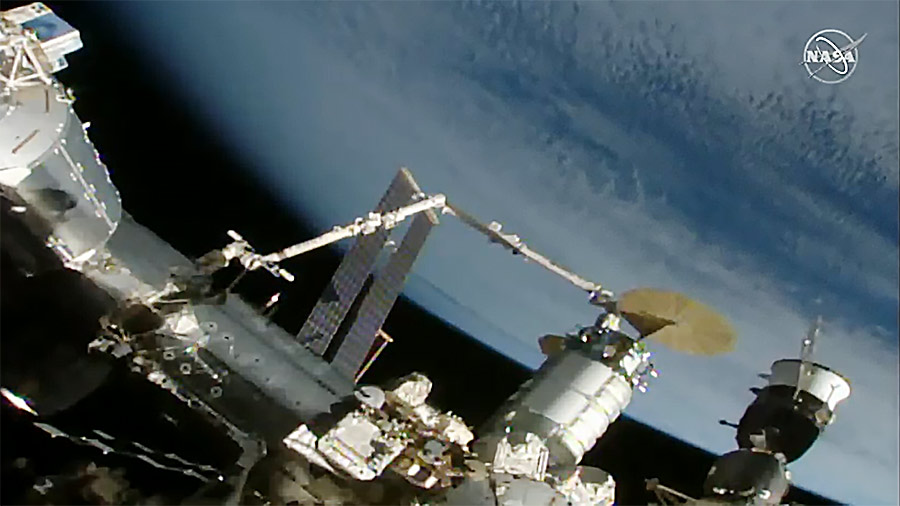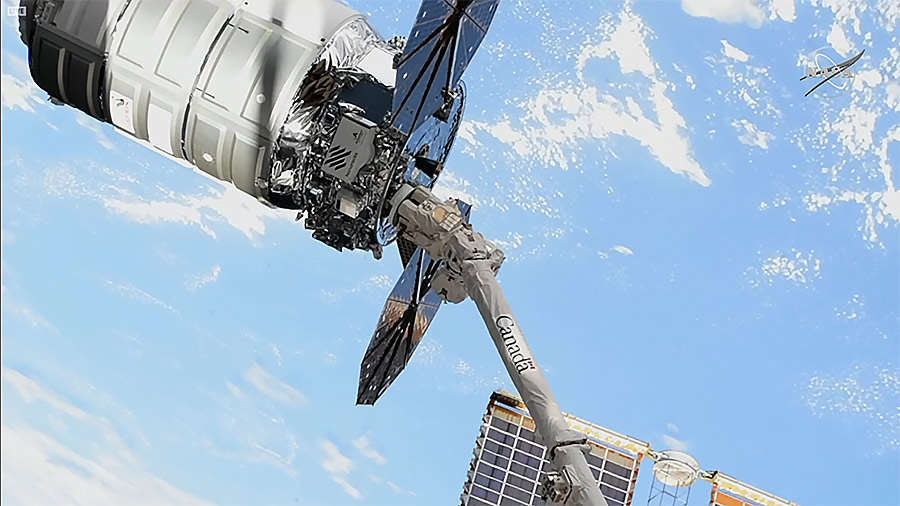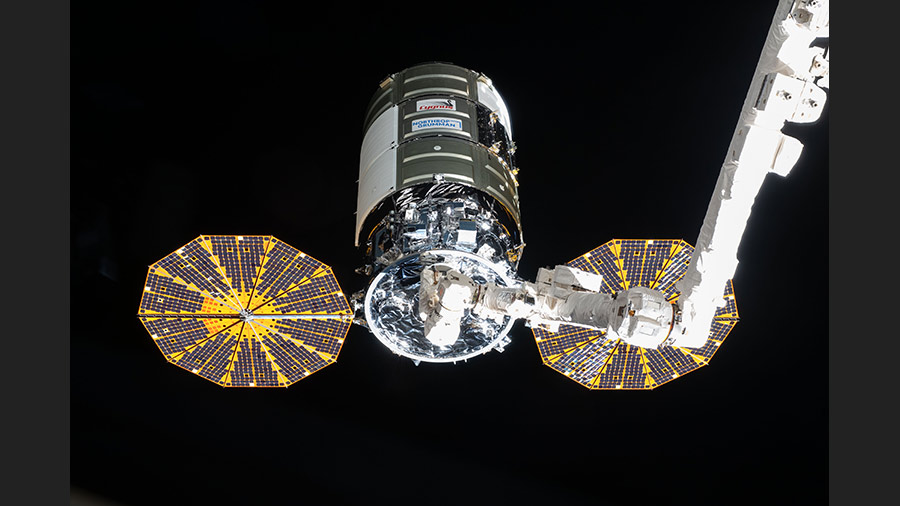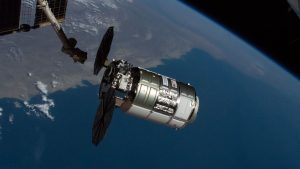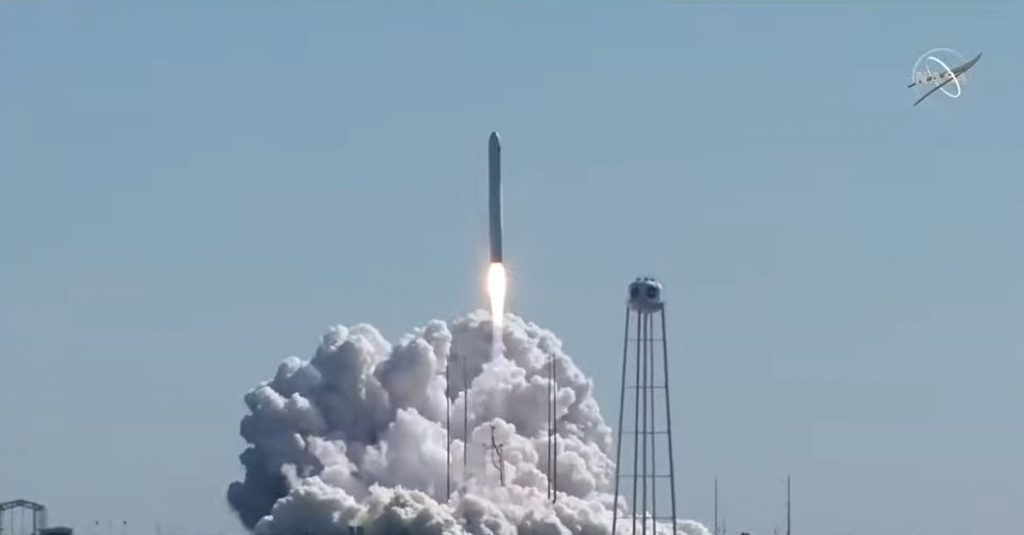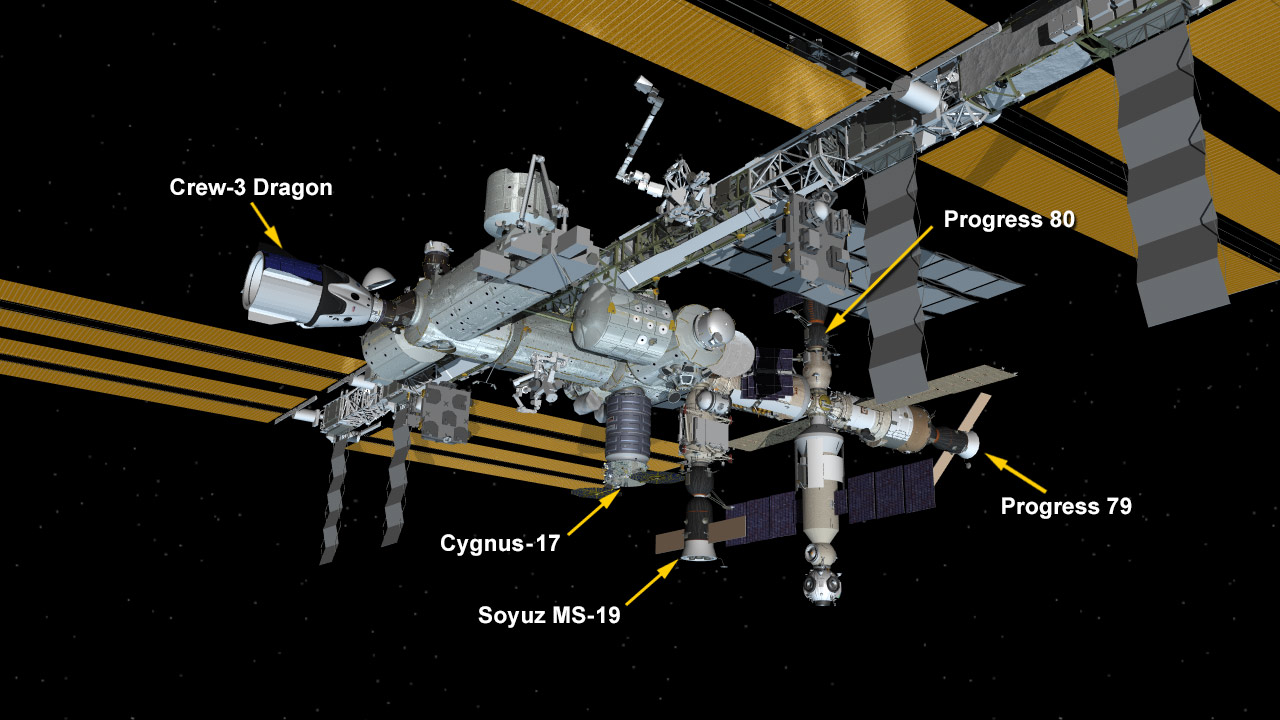
Northrop Grumman’s Cygnus spacecraft installation on the International Space Station is now complete. Cygnus launched atop an Antares rocket at 12:40 p.m. EST Saturday, Feb. 19 from NASA’s Wallops Flight Facility in Virginia. At about 4:44 a.m., NASA astronaut Raja Chari, along with NASA astronaut Kayla Barron as backup, captured Cygnus, carrying 8,300 pounds of research, hardware, and science experiments to the International Space Station.
Highlights of space station research facilitated by this mission include:
- a study that examines the effects of a drug on breast and prostate cancer cells
- a new combustion facility
- an investigation from Colgate-Palmolive that will leverage the acceleration of skin aging in microgravity to help create and validate an engineered tissue model to serve as a platform for testing potential products to protect aging skin
- a demonstration of a lithium-ion secondary battery capable of safe, stable operation under extreme temperatures and in a vacuum environment
- new hydrogen sensors that will be tested for the space station’s oxygen generation system
- a system that will test hydroponic and aeroponic techniques for plant growth and will allow scientists to observe root growth through video and still images
Findings from these and other investigations aboard the space station will contribute to keeping astronauts healthy during long-duration space travel and demonstrate technologies for future human and robotic exploration missions as part of NASA’s Moon and Mars efforts, including lunar missions through the agency’s Artemis program.
Cygnus will also deliver critical hardware to be installed during the upcoming ISS Roll-Out Solar Array (IROSA) spacewalks, as well as other components for the successful functioning of astronaut life on the space station, such as a trash deployer and acoustic covers for the waste management system.
This Cygnus mission is the first to feature enhanced capabilities that will allow the spacecraft to perform a reboost, using its engines to adjust the space station’s orbit as a standard service for NASA. The agency has one reboost is planned while Cygnus is connected to the orbiting laboratory. A test of the maneuver was performed in 2018 during Cygnus’ ninth resupply mission.
Cygnus will remain at the space station until May before it deploys CubeSats, then disposes of several thousand pounds of trash during its re-entry into Earth’s atmosphere, which will result in its destruction.
Learn more about station activities by following the space station blog, @space_station and @ISS_Research on Twitter, as well as the ISS Facebook and ISS Instagram accounts.
Get weekly video highlights at: http://jscfeatures.jsc.nasa.gov/videoupdate/
Get the latest from NASA delivered every week. Subscribe here: www.nasa.gov/subscribe

